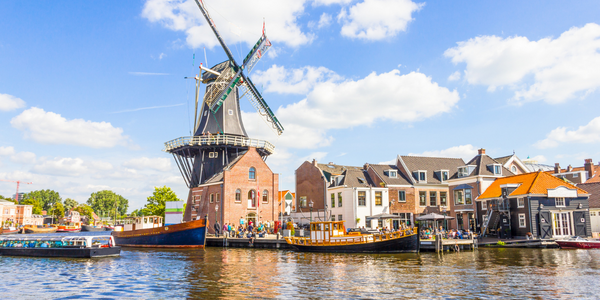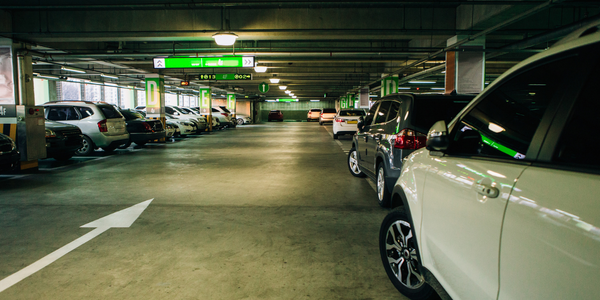Customer Company Size
Large Corporate
Region
- America
Country
- United States
Product
- HPE ProLiant servers
- HPE SimpliVity
- HPE Nimble Storage
- VMware Hypervisor
- VMware Horizon
Tech Stack
- HPE ProLiant servers
- HPE SimpliVity
- HPE Nimble Storage
- VMware Hypervisor
- VMware Horizon
Implementation Scale
- Enterprise-wide Deployment
Impact Metrics
- Cost Savings
- Customer Satisfaction
- Employee Satisfaction
- Productivity Improvements
Technology Category
- Infrastructure as a Service (IaaS) - Cloud Computing
- Infrastructure as a Service (IaaS) - Cloud Storage Services
- Platform as a Service (PaaS) - Connectivity Platforms
Applicable Industries
- Cities & Municipalities
Applicable Functions
- Facility Management
- Logistics & Transportation
- Maintenance
Use Cases
- Building Automation & Control
- Remote Asset Management
- Water Utility Management
Services
- Cloud Planning, Design & Implementation Services
- Cybersecurity Services
- System Integration
About The Customer
The City of Encinitas is a coastal city located in Southern California, known for its beautiful beaches and laidback, small-town feel. The city prides itself on the secure, uninterrupted availability of a wide range of services and operations, ensuring public access to government resources and information, while making life safer for the city's 60,000 residents. The city's IT department supports a wide range of agencies that facilitate community activities, protect the environment, and enhance the quality of life in the city. The city also supports other government entities, such as the San Dieguito Water District (SDWD) and San Elijo Joint Powers Authority (SEJPA), which provide potable and recycled water to over 66,000 citizens.
The Challenge
The City of Encinitas manages public services for its residents, ensuring the secure, uninterrupted availability of a wide range of services and operations. The city's IT department functions as a central repository that powers several departments, leveraging centralized technological support and resources. However, the city needed to protect its vital systems and citizens' sensitive information from cyberattacks. The onset of the COVID-19 pandemic accelerated the need for a more robust IT infrastructure that could support an increasingly connected city and a remote workforce. The city needed a solution that could ensure the secure and reliable delivery of critical public services while enabling a hybrid workforce.
The Solution
The City of Encinitas, working with Hewlett Packard Enterprise and partner Nth Generation, deployed a solution that included a hyperconverged infrastructure leveraging HPE SimpliVity and HPE ProLiant servers. The city also deployed HPE SimpliVity with VMware HorizonR so users could remotely access their desktop PCs or VDI session during the pandemic. The upgraded solution includes HPE Nimble Storage, for hosting all the applications, and HPE ILO, which enables users to configure and administer their servers remotely. These functions include updating firmware, checking device status, and installing and deploying servers, all while providing high-level security. The city's IT department relied heavily on hands-on support of long-time partner Nth Generation, which acts as a virtual CSO to the organization's IT department.
Operational Impact
Quantitative Benefit

Case Study missing?
Start adding your own!
Register with your work email and create a new case study profile for your business.
Related Case Studies.

Case Study
Turning A Stadium Into A Smart Building
Honeywell created what it called the “intelligent system” for the National Stadium in Beijing, China, turning the venue for the opening and closing events at the 2008 Summer Olympics into a “smart building.” Designed by highly controversial artist Ai Weiwei, the “Bird’s Nest” remains one of the most impressive feats of stadium architecture in the world. The 250,000 square meter structure housed more than 100,000 athletes and spectators at a time. To accommodate such capacity, China turned to Honeywell’s EBI Integrated Building Management System to create an integrated “intelligent system” for improved building security, safety and energy efficiency.
.png)
Case Study
Smart Street Light Network (Copenhagen)
Key stakeholders are taking a comprehensive approach to rethinking smart city innovation. City leaders have collaborated through partnerships involving government, research institutions and solution providers. The Copenhagen Solutions Lab is one of the leading organizations at the forefront of this movement. By bringing together manufacturers with municipal buyers, the Copenhagen Solutions Lab has catalyzed the development and deployment of next-generation smart city innovations. Copenhagen is leveraging this unique approach to accelerate the implementation of smart city solutions. One of the primary focus areas is LED street lighting.

Case Study
Buoy Status Monitoring with LoRa
The Netherlands are well-known for their inland waterways, canals, sluices and of course port activities. The Dutch Ministry of Infrastructure indicates that there are thousands of buoys and fixed items in and near water environments that would profit from IoT monitoring. One of the problems with buoys for example, is that they get hit by ships and the anchor cable breaks. Without connectivity, it takes quite some time to find out that something has happened with that buoy. Not to mention the costs of renting a boat to go to the buoy to fix it. Another important issue, is that there is no real-time monitoring of the buoys at this moment. Only by physically visiting the object on the water, one gains insight in its status.

Case Study
Barcelona Case Study
Barcelona’s heavy traffic and its associated high levels of pollution were the primary factors that motivated some companies and universities to work on strategies for improving traffic in the city centre. Bitcarrier is one of the technologies involved in the In4Mo Project, whose main objective is to develop the applications that form the core of smart mobility, one of the fundamental pillars of the smart city concept.

Case Study
China Mobile Smart Parking
Smart Parking, powered by NB-IoT technology, is making it easier for drivers to find free parking spots. Cities can better manage their parking assets and maximize the revenue available to them as a result. Drivers searching for parking create congestion and pollution by circling and hunting for available parking. Smart Parking services are able to significantly ease these problems by guiding a driver directly to a parking space.




---nyse--hpe_1.jpg)



